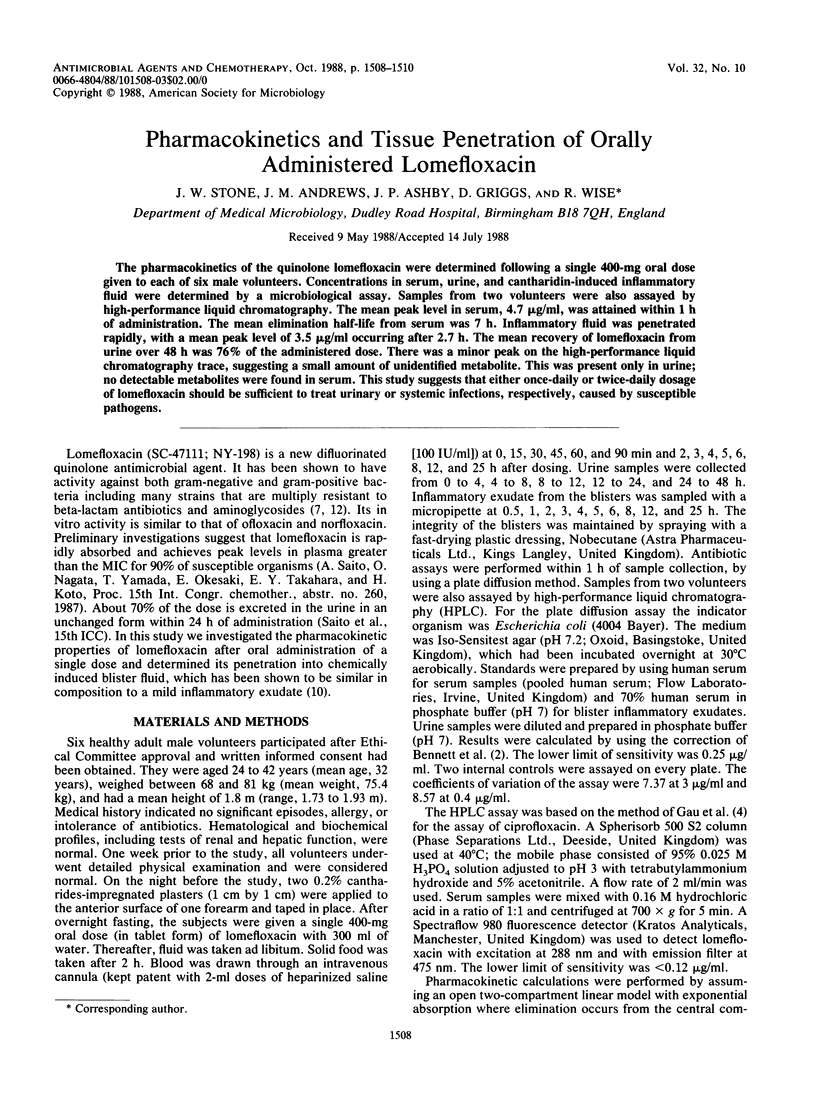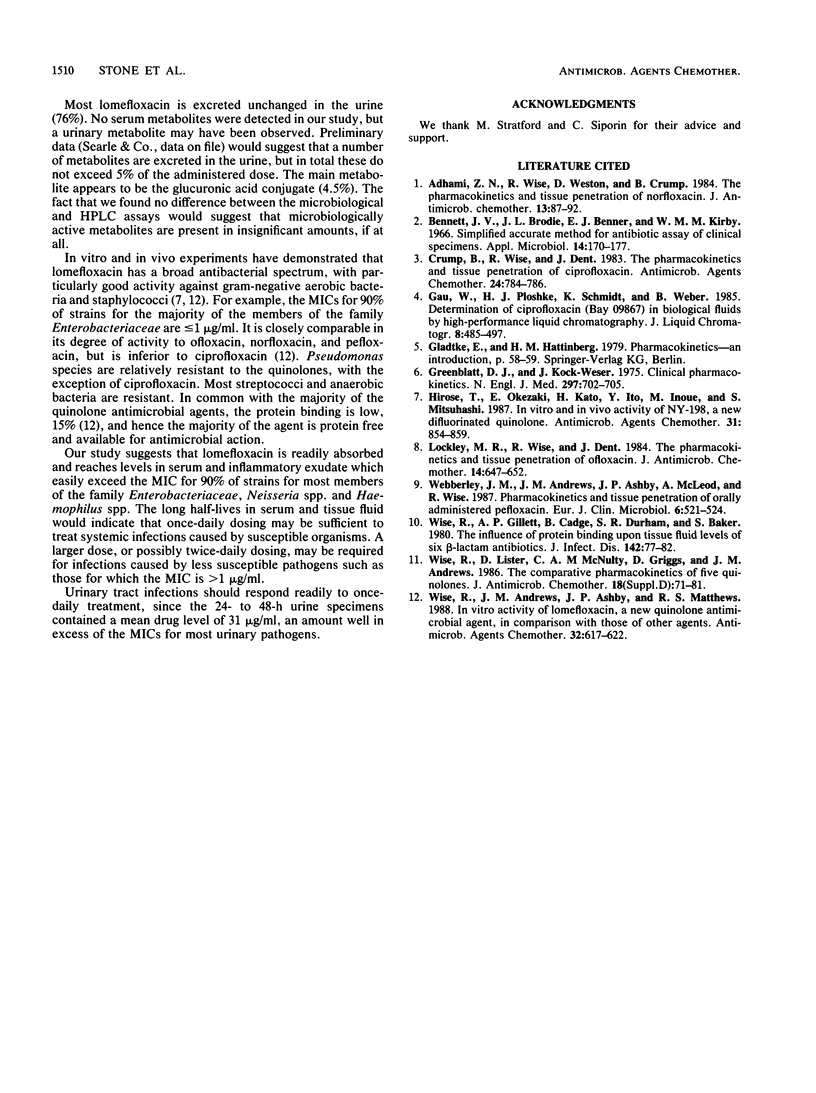Abstract
The pharmacokinetics of the quinolone lomefloxacin were determined following a single 400-mg oral dose given to each of six male volunteers. Concentrations in serum, urine, and cantharidin-induced inflammatory fluid were determined by a microbiological assay. Samples from two volunteers were also assayed by high-performance liquid chromatography. The mean peak level in serum, 4.7 micrograms/ml, was attained within 1 h of administration. The mean elimination half-life from serum was 7 h. Inflammatory fluid was penetrated rapidly, with a mean peak level of 3.5 micrograms/ml occurring after 2.7 h. The mean recovery of lomefloxacin from urine over 48 h was 76% of the administered dose. There was a minor peak on the high-performance liquid chromatography trace, suggesting a small amount of unidentified metabolite. This was present only in urine; no detectable metabolites were found in serum. This study suggests that either once-daily or twice-daily dosage of lomefloxacin should be sufficient to treat urinary or systemic infections, respectively, caused by susceptible pathogens.
Full text
PDF


Selected References
These references are in PubMed. This may not be the complete list of references from this article.
- Adhami Z. N., Wise R., Weston D., Crump B. The pharmacokinetics and tissue penetration of norfloxacin. J Antimicrob Chemother. 1984 Jan;13(1):87–92. doi: 10.1093/jac/13.1.87. [DOI] [PubMed] [Google Scholar]
- Bennett J. V., Brodie J. L., Benner E. J., Kirby W. M. Simplified, accurate method for antibiotic assay of clinical specimens. Appl Microbiol. 1966 Mar;14(2):170–177. doi: 10.1128/am.14.2.170-177.1966. [DOI] [PMC free article] [PubMed] [Google Scholar]
- Crump B., Wise R., Dent J. Pharmacokinetics and tissue penetration of ciprofloxacin. Antimicrob Agents Chemother. 1983 Nov;24(5):784–786. doi: 10.1128/aac.24.5.784. [DOI] [PMC free article] [PubMed] [Google Scholar]
- Greenblatt D. J., Kock-Weser J. Drug therapy. Clinical Pharmacokinetics (first of two parts). N Engl J Med. 1975 Oct 2;293(14):702–705. doi: 10.1056/NEJM197510022931406. [DOI] [PubMed] [Google Scholar]
- Hirose T., Okezaki E., Kato H., Ito Y., Inoue M., Mitsuhashi S. In vitro and in vivo activity of NY-198, a new difluorinated quinolone. Antimicrob Agents Chemother. 1987 Jun;31(6):854–859. doi: 10.1128/aac.31.6.854. [DOI] [PMC free article] [PubMed] [Google Scholar]
- Lockley M. R., Wise R., Dent J. The pharmacokinetics and tissue penetration of ofloxacin. J Antimicrob Chemother. 1984 Dec;14(6):647–652. doi: 10.1093/jac/14.6.647. [DOI] [PubMed] [Google Scholar]
- Webberley J. M., Andrews J. M., Ashby J. P., McLeod A., Wise R. Pharmacokinetics and tissue penetration of orally administered pefloxacin. Eur J Clin Microbiol. 1987 Oct;6(5):521–524. doi: 10.1007/BF02014239. [DOI] [PubMed] [Google Scholar]
- Wise R., Andrews J. M., Ashby J. P., Matthews R. S. In vitro activity of lomefloxacin, a new quinolone antimicrobial agent, in comparison with those of other agents. Antimicrob Agents Chemother. 1988 May;32(5):617–622. doi: 10.1128/aac.32.5.617. [DOI] [PMC free article] [PubMed] [Google Scholar]
- Wise R., Gillett A. P., Cadge B., Durham S. R., Baker S. The influence of protein binding upon tissue fluid levels of six beta-lactam antibiotics. J Infect Dis. 1980 Jul;142(1):77–82. doi: 10.1093/infdis/142.1.77. [DOI] [PubMed] [Google Scholar]
- Wise R., Lister D., McNulty C. A., Griggs D., Andrews J. M. The comparative pharmacokinetics of five quinolones. J Antimicrob Chemother. 1986 Nov;18 (Suppl 500):71–81. doi: 10.1093/jac/18.supplement_d.71. [DOI] [PubMed] [Google Scholar]


